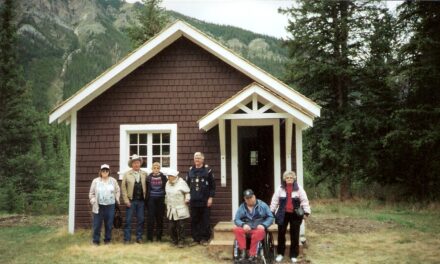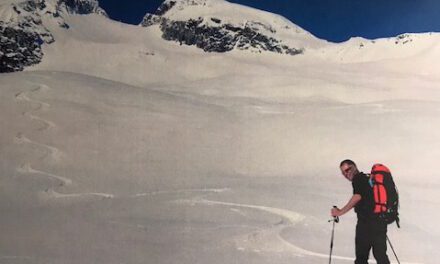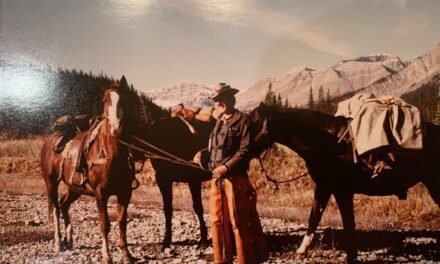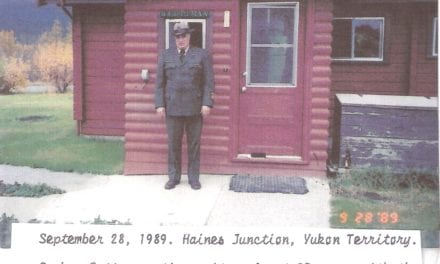SH: I didn’t know that story. That’s a good one.
AL: Well, all the stories, you can tell once you’re out.
When I was in Elk Island I was involved in a really good poaching investigation there. There was an elk that had been shot in the summer, along the boundary of the park. They cut the fence dragged this elk out, but by the time we got there, there wasn’t much to go on. There were some vehicle tracks, nobody had seen them, there was blood and tissue left over, maybe they’d gutted it, I can’t remember. There were some snippers, that sort of thing but very little to go on, so it became a cold case.
Later on that year, somebody gave an anonymous tip to Fish and Wildlife about suspects that might have done this. So I was working with a big team; Randy Fingland, Duane Martin, Murray Hindle, John Steele, Phil Minton and Mike Briggs, so it was a pretty involved investigation. We were getting clues here and there. I found the vehicle that was used, and actually found blood and casings and what not in the trunk of the car that was used. It was at a wreckers, stacked up with a bunch of other cars that were going to get crushed. Anyway, when we went to do the search warrant, these guys were in Edmonton, and they had a lot of history of violence so we said “Maybe we can ask the Edmonton Police if they can send somebody with us.” So the police looked at that and said “With those guys, we’re going to give you the Emergency Response Team” (ERT).
I remember sitting in the car with Duane Martin as we were waiting to do the search warrant, and the Edmonton ERT team went in and you could hear them set off stun grenades, and they go in with semi automatic rifles, and by the time we went inside they had the two guys handcuffed on the floor, so we were able to search with any incidents for us. We got them and they had I think a $4000.00 fine, something around that range, which was, for the early ‘90s, a pretty good fine for poaching an elk.
The sad things, that I recall was, I worked with Mike Wynn when I worked out in Gwaii Haanas. Then both of us came back to the mountains. I went back to Banff and Mike went to Jasper and was working at Sunwapta. He was killed in an avalanche. I remember the Banff Warden Service set up these honor posts along the Trans Canada as Mike’s body was being taken back to Jasper.
SH: I remember that.
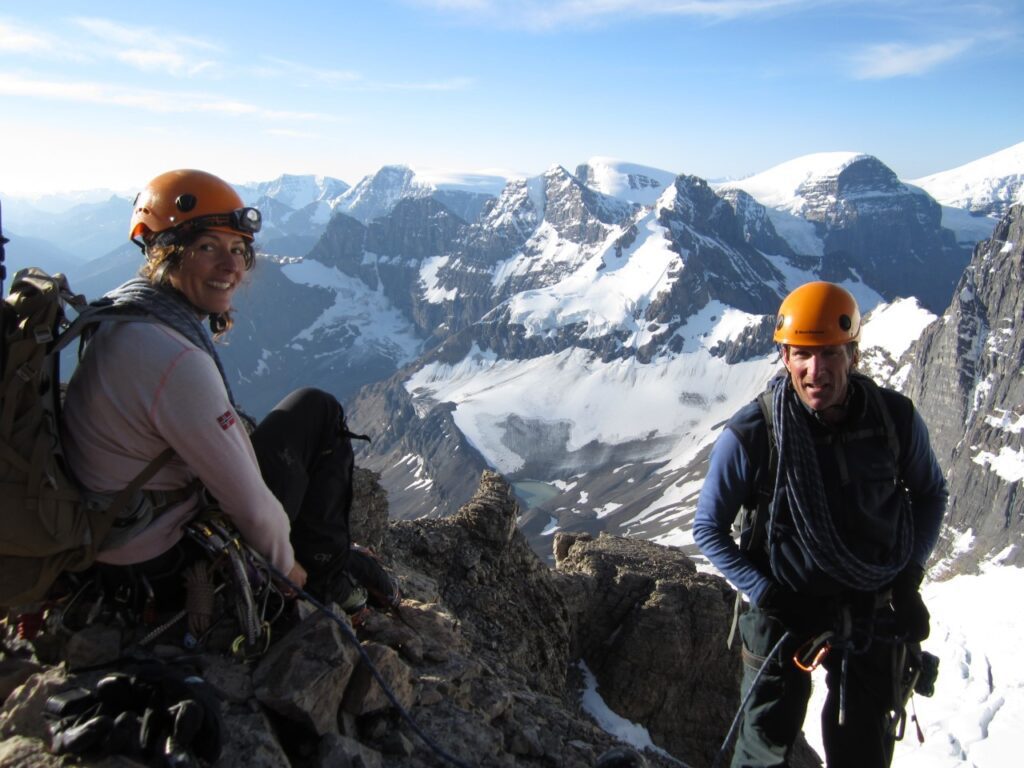
Sara Jaward and A.L. climbing Mt. Diadem.
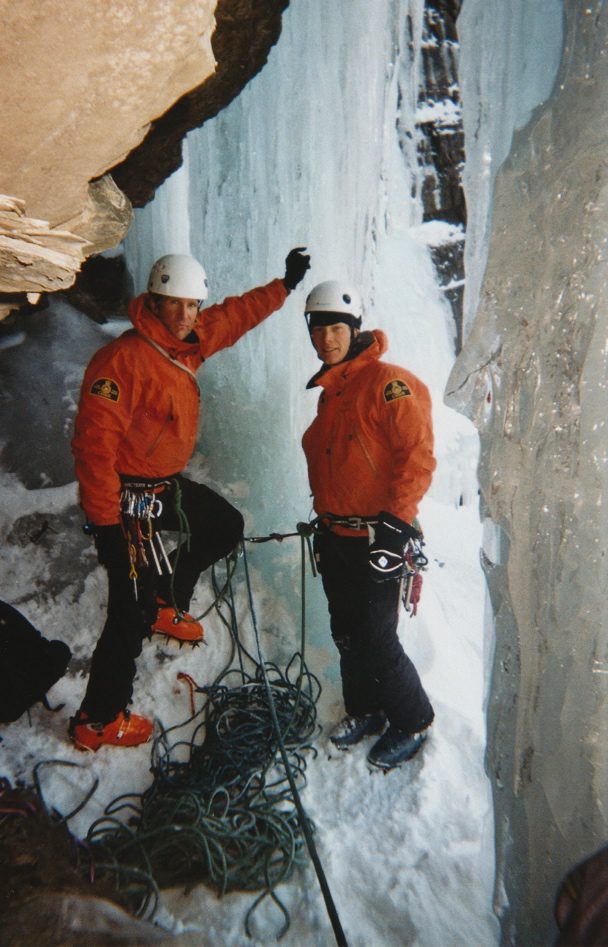
A.L.and Jon Stuart Smith, Murchison Falls.
AL: The Public Safety team had a station where we had Hendo (Mike Henderson) and the (search) dog, and me and skidoos, the fire department came and had a big banner and had trucks on the Norquay overpass. That was pretty memorable and sad.
The other one was the kids, the Strathcona-Tweedsmuir kids in Glacier. I was on that one with Johnny two names, that’s what Marc calls him, Jon Stuart Smith. We were up on Odaray shoulder, going into Lake O’Hara, and we got the call. So we zipped back down to the truck and booted it all the way to Glacier. Just as we were arriving in the truck as the helicopter was coming in with the Banff team. Jon and I got flown up and our primary duty was to evacuate all the dead kids from the snow. It was very deep and they all had telemark bindings on so you had to dig them right out to get down and undo their bindings. So you were staring at their faces the entire time you were doing it. I forget how many of the seven we dug out, three or four of them, I remember a few of their faces. You just have to bring it up and I can think of them. We’d dig them out and load them like cordwood into the back of the helicopter. I remember that one. That was the one that affected me the most emotionally.
I had dealt with kid’s deaths before … I had a young 14 year old kid that had gone to the waterfalls behind Rampart Creek when I was up at the Crossing that I’d worked on. He’d drowned but we got him to the helicopter. But this one, I think it was just the number of kids in the tragedy … it really hit me.
SH: Yes that’s such a sad one.
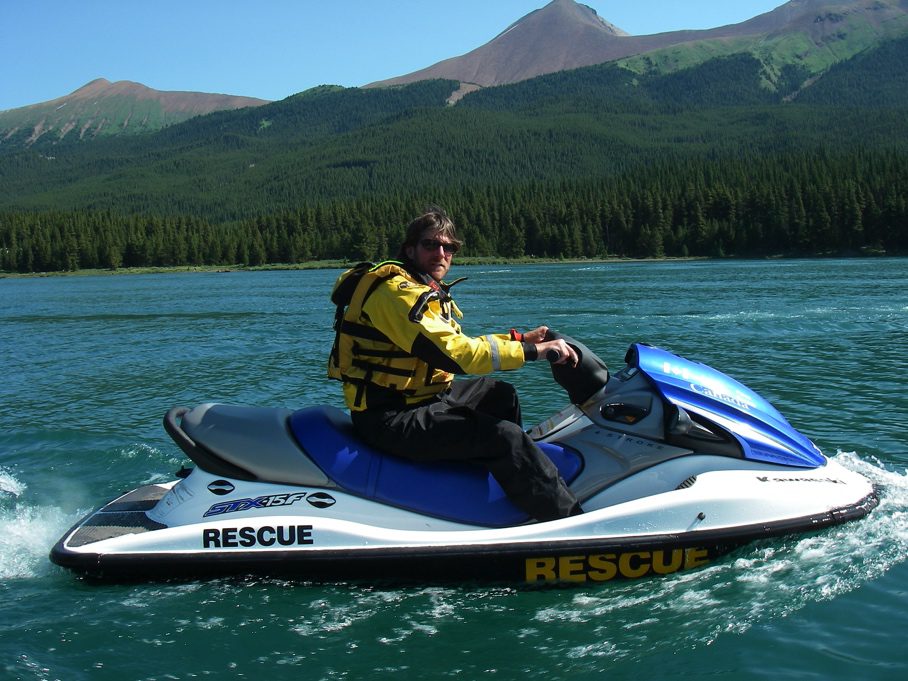
A.L. – Water Rescue
AL: I have a happy one.
SH: Oh good, let’s have a happy one.
AL: My first season with public safety in Banff, Brad (White) and I were skiing Pipestone Bowl and there was a bit of a crust before you dropped into the bowl. Of course Brad skis everything like it’s golden. So he skied down and I got going and there was a wind crust at the top and I crashed, went down, and blew my knee out. So I had to get flown out of there, was out for the whole next year, got surgery, got it fixed. So by the next year I’m back in public safety again, my knee has had surgery, I should be good to go. They’ve fixed up the meniscus. Marc Ledwidge and I are shuffling along the top of Wawa Ridge, and click my meniscus goes. So I’m down, and I knew the procedure. I called Dr. Heard’s office (Orthopaedic Surgeon) and got on a waiting list for surgery. They said, “Okay we’ll put you on a waiting list.” So I went through the weekend, and that Monday there was a big snowstorm. Dr. Heard did operations in Golden and in Banff, and they said, “Hey, we’ve got a cancellation in Golden, but you have to get here in an hour and a half. So there’s no way you could make it there. So I think it was Tim (Auger) I was working for, and I told Tim that “Yes I could get surgery in Golden but I can’t make it there. Tim says “I’m going to talk to Ian (Syme).” So he goes and talks to Ian, and comes back and says, “You know what AL, we need someone to do an avalanche patrol, a helicopter avalanche patrol to Golden. Do you mind doing that for us?” So they flew me to Golden, I got my knee done. Dr Heard drove me back to Banff at the end of the day when he was done working, and I was back working in two weeks. Otherwise I would probably have been out for the winter again. It’s incredible, you know, when you think of things like that happening. It’s one of those things about being in the Warden Service. You have people like that, that you are working with.
SH: Wow, those are great stories. Can you tell me about a wildlife or enforcement one?
AL: I guess I have a funny enforcement one with (John) Kellas. We were doing an evening shift in the fall. The campgrounds weren’t really doing much then so we ended up taking a pull through in the day use area up at Minnewanka, and there’s this car kind of parked. It just looked suspicious. I got out and checked the hood of the car, it was warm. Whoever it was had just got there. So I said, “Let’s go take a look around”. So we looked around, and sure enough the door to the concession building was kicked in. John says I’ll go back to the truck and call it in, and maybe the RCMP will come up. I said, “Okay, well, I’m just going to poke around a bit.” So I walked in with my flashlight and heard somebody go running out the back. So I went to the back, where they’d run out and I yelled “Peace Officer, come out now or I’ll release the dog”. So they came out and said, “Where’s your dog?” I said, “I don’t have a dog.” So just as that happened John walked back around the corner and he happened to have a shotgun on his shoulder and they calmed down. The police came, and these guys had been doing B&E’s (Break & Enter) all over town so they were busted. But I bluffed them with “a dog”.
SH: That’s a good one. You always did have dogs.
AL: Yes, if there was one job that I would have really loved to have had, it was being a dog handler, but the timing was just wrong, I didn’t have the qualifications at the time when Gord (Peyto) or Will (Devlin) retired. It must have been Will because Darrien (Sillence) went up north and then Mike (Henderson) took over for Scotty (Ward).
SH: You would have been good at it for sure.
AL: I’ve got one more story that very memorable. When I was in backcountry, Scott (Ward) and I did a few boundary trips together. We did some really big trips, like riding from Indianhead to Scotch Camp, staying overnight, and then coming back. Some big trips. But this one was pretty interesting, because we rode from Barrier Cabin, I think it was the very end of November, or the first day of December, something like that. We rode from Barrier Cabin up and over Elk Horn Summit and then back down to the Ya Ha Tinda Ranch. It was late in the season, so it got dark pretty quick, so the last couple of hours of riding to the ranch was in the dark. There used to be that cut line that you’d ride along. I think it’s been either burned or logged or whatever now, but there was this narrow, dark, cut line you’d ride along. When we were not far from the ranch, maybe half an hour or forty five minutes, this cougar started screaming really close to us. I just remember that. You could just feel the hair rising on the back of your neck.
SH: What do they sound like?
AL: They sound like a woman screaming. It’s wild. I have one more cougar story. Johnny Nylund, he was one of the big people in my career. He and I got along really well, and he taught me so much about horses. He hired me to help with the colts for a couple of springs up at the Ya Ha Tinda. We went out for a ride, and it was spring so there was some new snow, and we are both on colts. We can see this whole thing played out in the snow, where there was a herd of elk, and you can see where a cougar has come in and grabbed one of the elk, and then you can see the drag mark, dragging it off into this bunch of bush. So we’re thinking, “Wow, this looks pretty fresh.” So we’re on the horses riding around looking at this drag mark, and all of a sudden this cougar busts out of the bush and runs right between us. I remember both of us, as the colts spun around from being shocked by this cougar, both of us holding on for dear life so we wouldn’t get thrown.
SH: Wow that’s exciting. You’ve got to tell me one rodeo story AL. Everybody has a horse story. Do you have a good one.
AL: I had this horse named Jack. I was given Jappy as my colt. He was great. Everybody I talked to that rode him after me said either you liked him or you didn’t like him. He was the nicest horse, most personable, he was always like “Hey, what are you doing?” He’d look at you through the window of the cabin, he was always raring to go, to explore new stuff. So, he was a “J” horse (born April 15th, 1997) and he was mine. But I also got this Jack horse a year later. He was a small horse. I think he was a catch colt from Garrett out of Dolly. Do you remember Dolly? She was that big barrel chested, little pack horse, a great pack horse. So they said, “See what you can do with Jack”, because he was a bit of dynamite. I had him as my chainsaw horse, because I figured I don’t want him to carry my eggs and stuff, because you had to be so delicate when you were putting boxes on him, or doing anything around him, because he would just explode.

A.L. at Indianhead district.
So I figured, maybe if I just start riding him, he might get more confidence. So, I was out at Indianhead district and I thought I’d just take a ride up to the tent camp. I just had him, and had left the other two in the corral, and I was out on the trail. Anytime you got on or off him he’d shy away, he was always doing something. You had to be so light with him. So we got up into the meadows before the tent camp and I think I reached back into the saddle bag to see if I could gently pull like a snickers bar out and he lost it. He bucked me off and when I fell to the ground I still had hold of the reins. He reared up and pulled the reins on me and buggered off. It was such a good thing that the rifle didn’t fall off because I think I would have dropped him, I was so mad at him.
SH: I always remember Syme telling me that Jappy had the same personality as you.
AL: (Laughs) Maybe I created that in him or maybe we were just two kindred spirits.
SH: How did the Warden Service change over the years? Centralization, affirmative action, changes in 1990s and 2000s. (Tape 40:30)
AL: Like I said I worked through that whole gun issue and that was obviously in my career the biggest change. We went from being the Warden Service, the all-encompassing Warden Service, to the wardens being stove piped to just doing law (enforcement), and everybody else being stove piped into their functions. The whole divide and conquer thing to keep us from becoming such a strong entity again. That was the biggest change I think that I saw.
SH: Okay, you stayed on the resource conservation side didn’t you? You didn’t go to the law side?
AL: I didn’t and partly that was because of two reasons; I didn’t feel right about having to apply for a job, I’d been the court warden and had done all of these investigations, so was obviously proficient in law enforcement, and now I had to apply for the job, so I didn’t put my heart and soul into it, so that and also being colorblind. They put the color restrictions in, and people said you could fight that but I was kind of at the point…and I look back and it was another fortunate decision I think. I don’t think I would have liked being just doing law enforcement. I was glad to move. From there I was in Visitor Safety in Jasper so it was a better move for me.
SH: Yes it was a better fit for you for sure. So tell me, because I was out of Jasper by then, when they shut Sunwapta down. How did that come about?
AL: It was kind of slow and another one of those things. I got a bunch of money to modernize the station and the rescue room and made sure everything was up to snuff and the buildings were all being looked after. I think they had this planned, because I remember hearing hints that something was going to happen there. I think it was just part of that budget cutting … it was during the Harper era, when they knew the money was going to be cut at some time. It was 2010 and I had gone in for hip surgery so I was kind of out of the picture anyway, and I think from there on it slowly died. Mike Eder and Shauna (Wilkinson) were probably the last people that worked out of the station, but the actual functioning station was done by 2010. Now it’s just sitting, all the buildings are still in really good shape, and it’s just sitting there. The Parkway doesn’t get any attention… it’s that classic where everybody gets stuck around town, because there’s lots of stuff going on around town, and it becomes kind of that forgotten area.
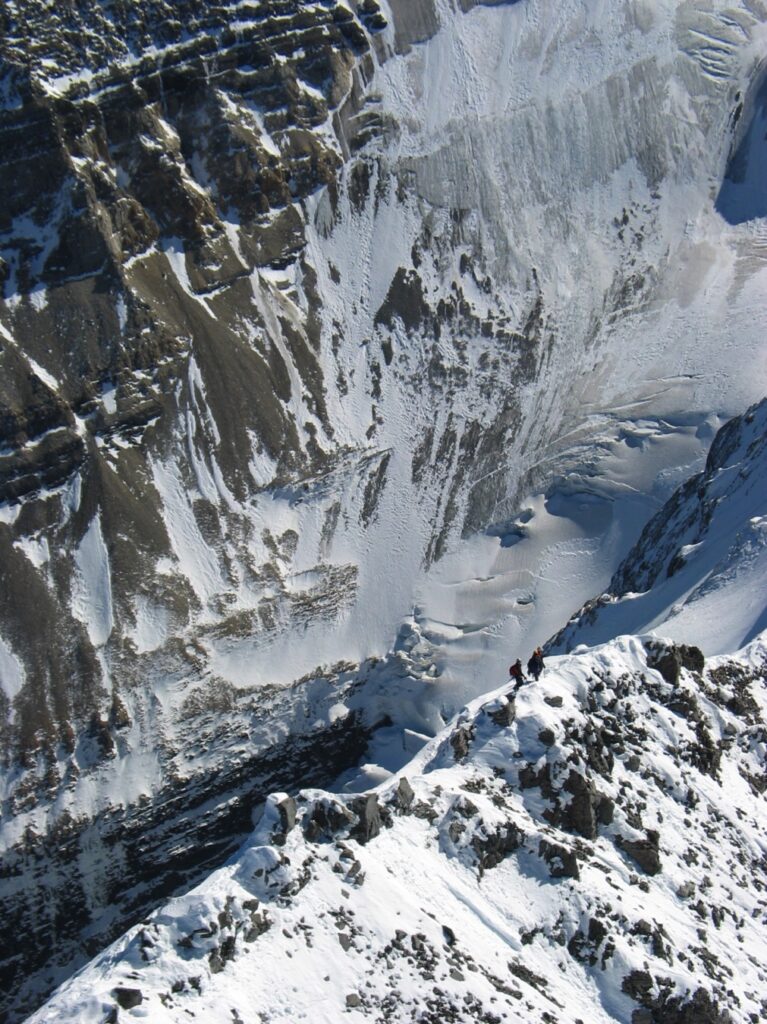
Percy Woods and A.L. on the East ridge of Mt. Victoria.
